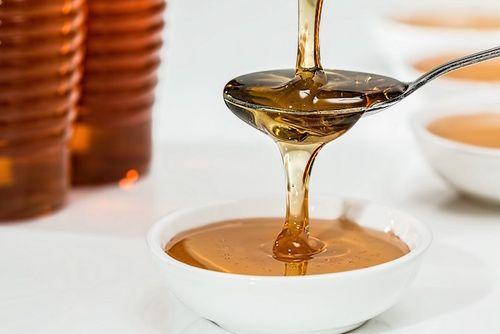The wildflower honey, as the name implies, it is a honey produced from several types of flowers, it is one of the most common and widespread and has a delicate flavor. Great for those who have to energize and purify the body, has a stimulating and regulating function. Let's find out better.
> 1. What is honey from millefiori
> 2. Properties and benefits of wildflower honey
> 3. Ally of
> 4. Calories and nutritional values of millefiori honey
> 5. Use in the kitchen

What is wildflower honey
The wildflower honey it is a unique product of its kind. It is produced in various areas, hilly, mountainous, flat, where there is a multitude of flowers of various types.
It is a precious apple, why it combines in itself the properties of various plants and it is unique in terms of aroma and flavor and takes on peculiar characteristics depending on the harvest area. For example, a high mountain honey, where alpine flora is predominant, can take on the scents of rhododendron, while in Mediterranean areas it can recall the scent of thistle.
Di wildflower honey there are essentially two varieties:
- clear and transparent, more delicate and sweet, with a less intense flavor;
- dark or amber, with a more decisive flavor, which may recall the honeydew.
Both can crystallize over time, especially at low temperatures, taking on more opaque shades.
To keep the nutrients intact, the most important thing is to make sure it comes kept as raw as possible, or produced naturally and in an artisanal way, with bees foraging on various types of flowers, and not through an industrial mixing process.
Properties and characteristics of wildflower honey
The nutrients contained in honey millefiori are larger than other honeys, as they are rich in pollen from different sources. It contains in fact many minerals and antioxidants.
It is a honey great for children and for those in the growth phase. Expectant mothers benefit from nutritional intake, as do those who are convalescing and the elderly, as strengthens and increases physical energies.
Effective adjuvant in the treatment of flu states, helps calm cough and lung diseases, also being a good one natural antibacterial. Wildflower honey stimulates the intestine and digestive system, as it is particularly appreciated for the liver purification and to improve circulation.
Used externally it is excellent to nourish skin and hair, promotes the healing of burns and wounds and is therefore an excellent ingredient for natural masks and packs.
Ally of
Throat, intestines, liver, skin and hair
Calories and nutritional values of millefiori honey
100 g of wildflower honey contain 304 kcal.
Furthermore, for 100 g of this product, we have:
- Sugar 82 g
- Dietary fiber 0,2 g
- 0,3 g protein
- Lipids 0 g
- Potassium 52 mg
- Sodium 4 mg
The wildflower honey, therefore, is made up almost exclusively of sugars. In its composition, however, it is important to note the high concentration of fructose which is a completely natural product, therefore less harmful than refined sugars by man.
The main components of honey are: water, sugar (fructose, glucose, maltose), acids, proteins, mineral salts, especially potassium and sodium; it also contains pigments and flower aromas, enzymes, B vitamins and vitamin C.
The calories of wildflower honey are immediately available; great for fixing minerals, specifically calcium and magnesium in the bones.
Use of wildflower honey in the kitchen
You can use in various ways in the kitchen: try a teaspoon of wildflower in coffee or milk, on rusks, but also in natural yogurt. It can also be used on ice cream, in fruit salads and to prepare biscuits and cakes.
Excellent accompanied with cheeses, it becomes an inevitable present to dress salads: try for example a mix of raw fennel, dried tomatoes, pine nuts, oranges, black olives, seasoned with a teaspoon of wildflower honey, pink salt and extra virgin olive oil.
For curative purposes it is advisable to dissolve two or three tablespoons a day in a glass of warm water.
Find out what the different types of honey are
Other articles on honey:
> Honey, a natural sweetener
> Thyme honey: properties and use in the kitchen
> Natural cosmetics based on honey
> Lavender honey: characteristics, properties and use


























